No description. (lol dont believe)
The another Comet of AA in my account is different that this.
Go to the page here
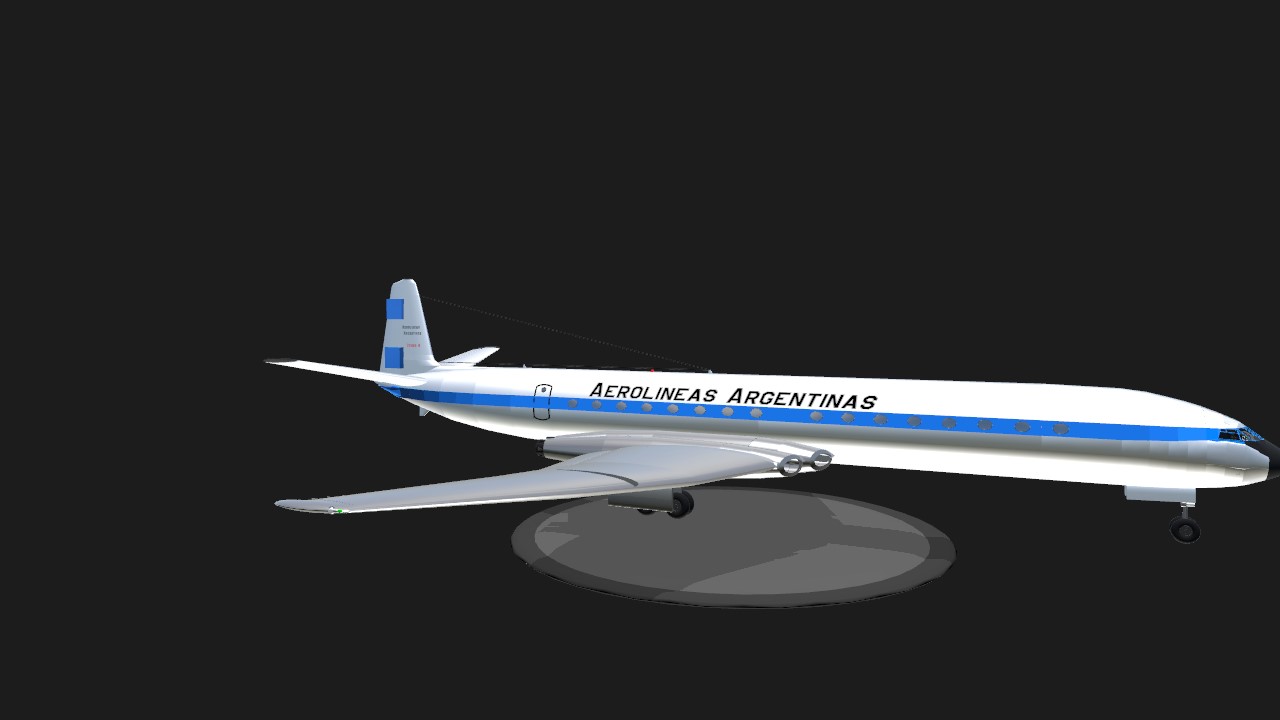
https://jundroo.blob.core.windows.net/simpleplanes/GameData/
aircraft/
1348/4shO3x-UserView-1.jpg
Aerolíneas Argentinas and de Havilland Comet
A.A. (Not American Airlines) operated this tutions: LV-PLM (re-reg. LV-AHN), LV-PLO (re-reg. LV-AHO), LV-PLP (re-reg. LV-AHP), LV-POY (re-reg. LV-AHR), LV-POZ (re-reg. LV-AHS), LV-PPA (re-reg. LV-AHU), LV-PTS (re-reg. LV-AIB).
Aerolíneas Argentinas have an crash with the Comet
Aerolíneas Argentinas Flight 322 was a scheduled Buenos Aires–São Paulo–Port of Spain–New York City international passenger service, operated with a Comet 4, registration LV-AHR, that crashed during climbout on the early stages of its second leg, when it collided with tree tops shortly after takeoff from Viracopos-Campinas International Airport on 23 November 1961. All 52 on board, including 40 passengers, were killed in the crash
Accident
Date
23 November 1961
Summary
Pilot error
Site
2 kilometres (1.2 mi) off Viracopos-Campinas International Airport, Campinas, São Paulo, Brazil
22°59'27?S 47°10'30?W
Aircraft
Aircraft type
de Havilland DH-106 Comet 4
Operator
Aerolíneas Argentinas
Registration
LV-AHR
Flight origin
Ministro Pistarini International Airport, Buenos Aires, Argentina
1st stopover
Viracopos-Campinas International Airport, Campinas, São Paulo, Brazil
2nd stopover
Piarco International Airport, Port of Spain, Trinidad
Destination
Idlewild Airport, New York City, United States
Passengers
40
Crew
12
Fatalities
52
Survivors
0
Close
History
The jetliner arrived from Buenos Aires, Argentina and landed at Viracopos-Campinas International Airport, 62 miles (100 km) north of São Paulo, as an intermediate stop. It took off at 05:38, bound for Piarco International Airport, Trinidad, with New York City as its final destination. After reaching an altitude of about 100 metres (330 ft), the aircraft lost altitude, collided with eucalyptus trees and crashed into the ground; its fuel tanks exploded on impact. All 52 people on board were killed in the disaster.
After Crash and Investigate
The accident was investigated by the Brazilian government with participation from the government of Argentina, the state of registry of the accident aircraft.
The weather conditions at the time of the accident were "dark night due to 7/8 (broken) stratocumulus at 400 metres (1,300 ft) and to 8/8 coverage (overcast) by altostratus at 2,100 metres (6,900 ft)." According to the Brazilian Air Ministry, the weather conditions did not contribute to the accident.
The investigation revealed that the first officer was seated in the left seat of the flight deck, which the investigators saw as an indication that he was receiving flight instruction from the captain during the accident flight.
The Brazilian Air Ministry determined the following Probable Cause:
It was presumed that the co-pilot was under flight instruction. If such was the case, the instructor, who was pilot-in-command, may have failed to brief or supervise the co-pilot properly.
The Argentinian government issued the following statement:
Argentina has determined, in the light of information it has gathered, that the cause of the accident was: "Failure to operate under IFR during a takeoff by night in weather conditions requiring IFR operation and failure to follow the climb procedure for this type of aircraft; a contributory cause was the lack of vigilance by the pilot-in-command during the operations."
Specifications
General Characteristics
- Predecessor de Havilland D.H106 Comet 4B BEA airtours 1969
- Created On iOS
- Wingspan 117.4ft (35.8m)
- Length 119.3ft (36.4m)
- Height 29.6ft (9.0m)
- Empty Weight N/A
- Loaded Weight 88,617lbs (40,196kg)
Performance
- Power/Weight Ratio 1.521
- Wing Loading 36.3lbs/ft2 (177.3kg/m2)
- Wing Area 2,440.8ft2 (226.8m2)
- Drag Points 25771
Parts
- Number of Parts 643
- Control Surfaces 5
- Performance Cost 2,925

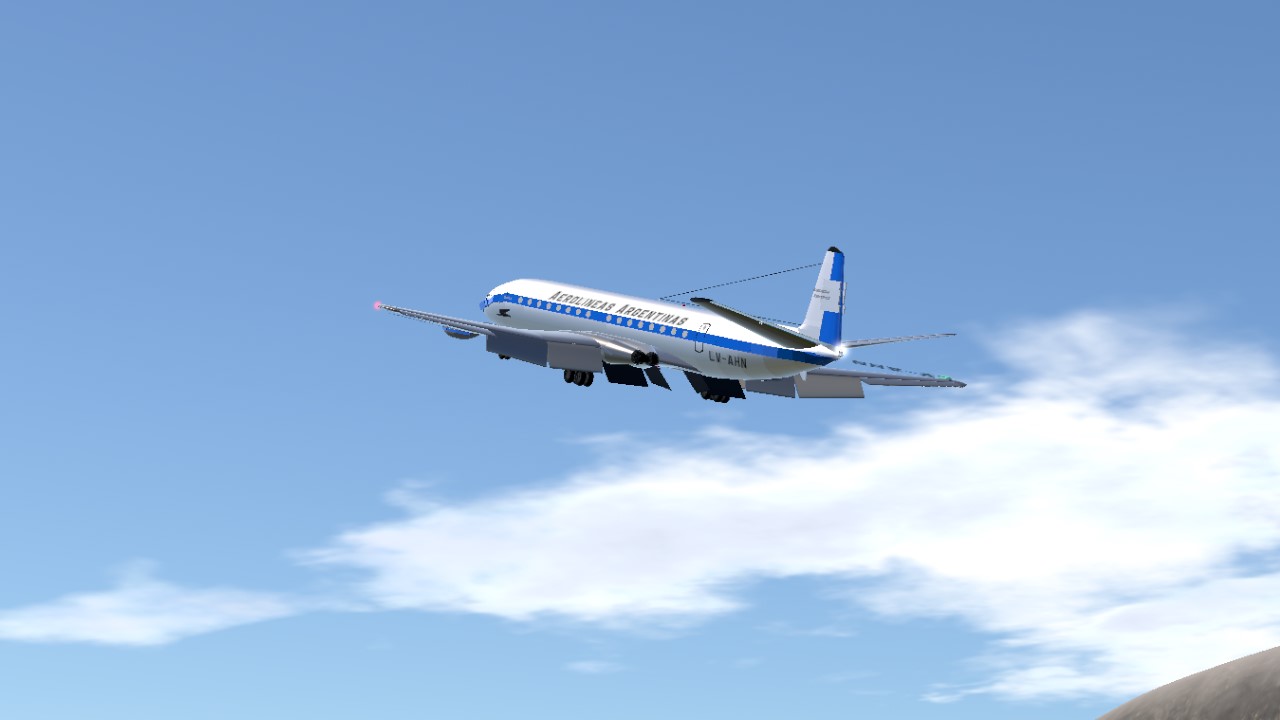
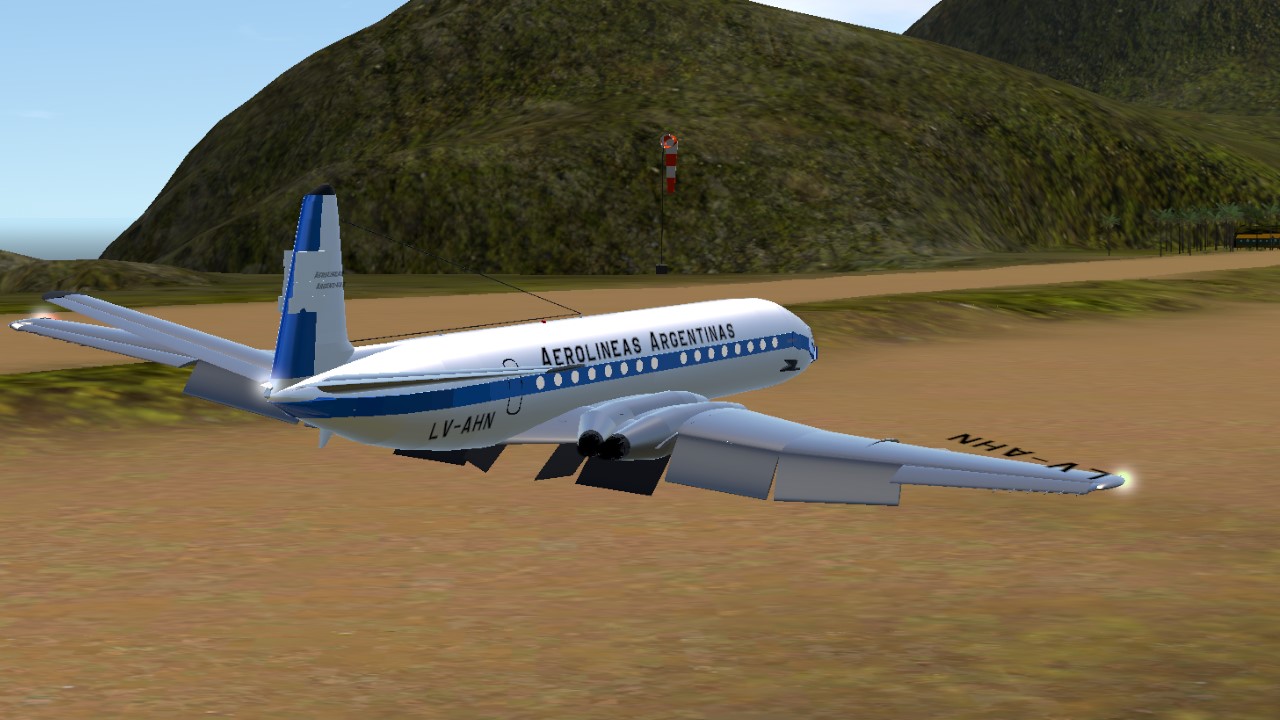
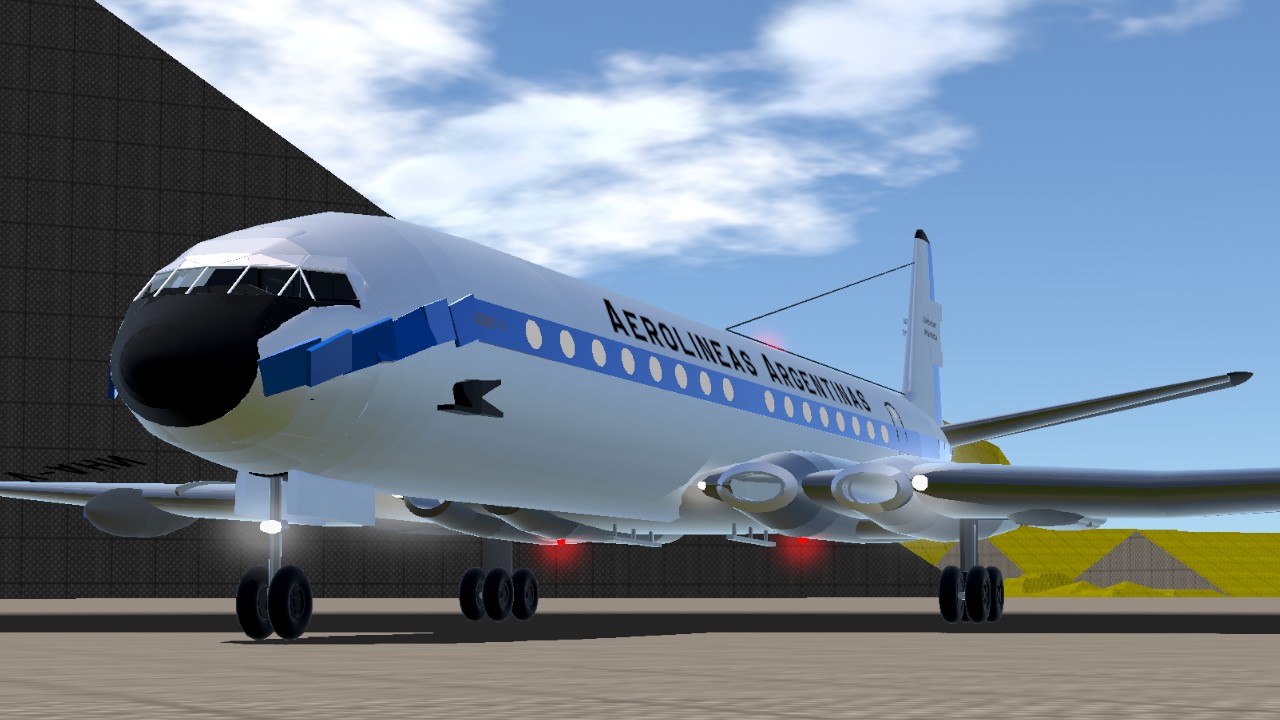


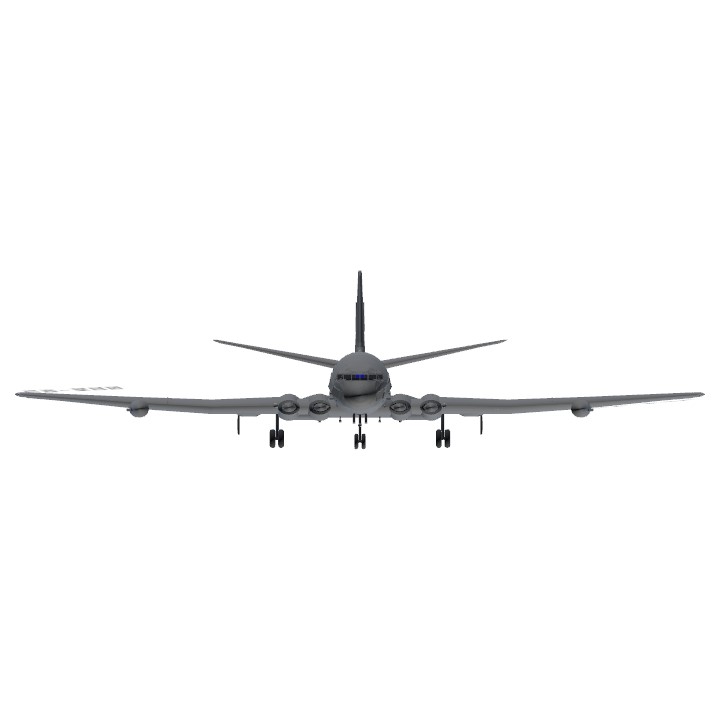
CREDITZ:
@Annedzsrue of the plen
h. i see. that is the true livery. i have one that i made 2.5 years ago